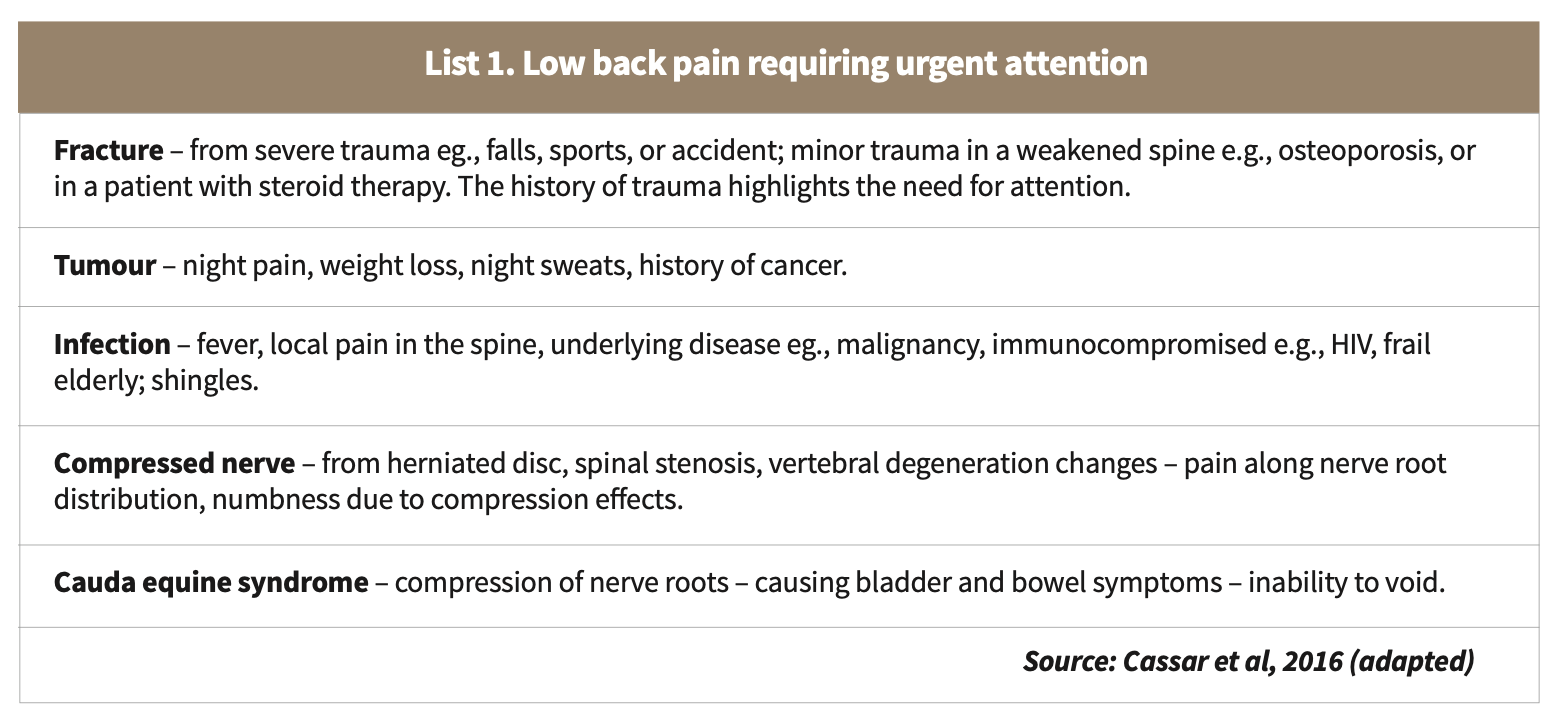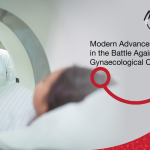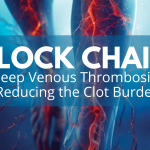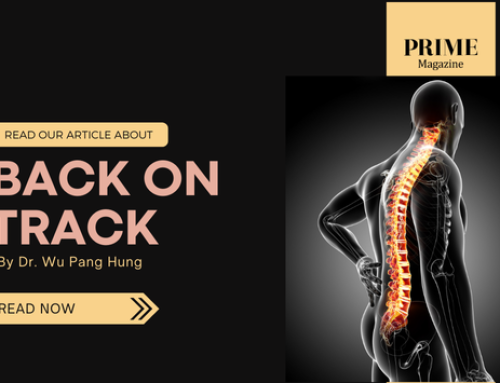What is low back pain?
Low back pain may be defined as “soreness or discomfort in the lower back, buttocks or hips”.1 While it is experienced among people of all ages, it is more common in older adults. An understanding of the common causes and what needs to be done will help us better understand this important condition. In this article, we examine several facts and myths related to backache in older adults.
The facts
Low back pain is common in older adults
Low back pain is common in older adults. In a 2012 review of the global prevalence of low back pain, the mean point prevalence was around 11.9 percent and the one-month prevalence was estimated to be around 23.2 percent. As the population ages, the global number of individuals with low back pain is likely to also increase over the coming decades.
Low back pain is most commonly caused by strain
There are various ways that we can classify low back pain. One way is to classify it into non-specific low back pain, inflammatory back pain requiring urgent care (the red flags) and the extraspinal causes (Casser et al, 2016).

Non-specific back pain is the most common cause of back pain and is usually caused by muscle strain. Unaccustomed repetitive movements like mopping or cleaning can cause the strain. The back can then hurt when you move it, walk, bend or twist. This usually recovers after a few days. Causes of low back pain requiring urgent care are those due to fracture from falls, tumour or cancer, infection, or nerve compression from herniated disc, spinal stenosis, or cauda equine syndrome (see List 1).
Low back pain can also be due to extraspinal causes
There is a need for the public to recognise that low back ache can also be due to extraspinal causes. (Cassar et al, 2016). Refer to List 2 for examples.
Steps should be taken to prevent back strain at work

• Heavy lifting
Do not lift heavy objects by bending over at the waist; instead, bend your hips and knees and then squat to pick up the object. Keep your back straight and hold the object close to your body. Do not twist your body while you are lifting.
• Sedentary strain
If you have to sit at your desk or drive for a long time, take breaks to stretch.
The myths
Everyone with back pain should have a spine X-ray
Not true. Most people who go to the doctor with recent low back pain do not need to have X-rays or MRI, or other imaging tests. However, on the other hand, X-rays or other imaging techniques are recommended if the pain persists for more than six weeks despite physical therapy, exercise and medication. Imaging tests should also be considered for patients who have symptoms (red flags) that may mean there is a serious condition causing the pain. These include fracture, cancer, compressed nerves or infection as discussed above.

Bed rest is the mainstay of treatment for low back pain
One longstanding myth is that bed rest is the mainstay for low back pain. Countries around the Western world have been actively promoting early mobilisation in non-specific low back pain, namely, in the majority of low back pain with no red flags to be concerned. The UK patient webpage on “Lower Back Pain” has this to The idea is to be up and about once the pain is better. An UK patient webpage titled “Lower Back Pain” has this to say: “Get back to normal activities as soon as you can… If you have a job, the aim is to get back to work as soon as possible. There is no need to wait for complete freedom from pain before returning to work. Returning to work often helps to relieve pain by getting back to normal pattern of activity and providing distraction from the pain.” There are also recommendations on pain relief. Generally, paracetamol tablets will be sufficient. (Dr Colin Tidy, Lower Back Pain, 2016).
So should you see a doctor? A lot depends on understanding your situation. If the pain is not severe, there are no red-flag symptoms and there is an history of overuse of the back muscles, eg. spring-cleaning work, then expectant treatment with paracetamol and rest for one to two days may be all you need to resort to.
Bodyweight has little relationship with low back pain

This is another myth. It is important to recognise that weight management is necessary in preventing low back pain. Management of obesity may prevent new onset of sciatica. Evidence for this is in a study conducted in Japan (Matsudaira K et al, 2013). This study was conducted with 3,194 Japanese workers and followed up for two years. At baseline, 765 participants who reported no low back pain were included in the study. In the distribution of age groups, 37.6 percent were younger than 40; 29.6 percent were between 40 and 49; and 32.8 were 50 or older.
The jobs of 569 (78.4 percent) did not involve manual handling. However, 77 (10.6 percent) participants manually handled objects less than 20 kg, 80 (11.0 percent) manually handled objects 20 kg or more, or worked as a caregiver. Of the 765 eligible participants, 141 (18.4 percent) reported a new episode of sciatica (pain in the buttocks shooting down the leg, signifying nerve compression). Univariate and multivariate statistical analysis comparing the obese (BMI > 25) and non-obese (BMI <25) showed the age group of 50 years and above to be 3.18 times more likely, compared to those younger than 40 years, to have sciatica.
The conclusion of the authors in this study was that managing obesity is key to preventing new-onset sciatica. Preventive strategies, including exercise, weight control and control of dietary intake are recommended for people at work. Further research is needed to assess the effectiveness of obesity management in preventing new-onset sciatica.
Discuss with friends and doctors
Low back pain is a common condition. Understanding its causes and how to approach dealing with it helps each of us to deal with low back pain confidently and yet safely. We need to remind ourselves of the facts and replace the myths with facts. Discussing the topic with doctors and among your circle of friends will help to build health literacy.
Conclusion
Low back pain is a common ailment and will be even more common in the decades to come as our population ages. Classifying the causes broadly into non-specific low back pain, red flags and extraspinal causes give each of us a framework of reference. Self-care in preventing back strain is both helpful and important.













